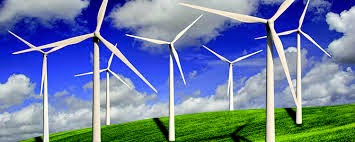
Major Types of Renewable Energy
Wind Power – Large wind turbines generate electricity from the power of the wind.
Solar Energy – The rays from the sun can help to heat a building or a pool. They can also be turned into electricity using solar cells.
Hydropower – Water from a dam or a river can be used to spin turbines and generate electricity.
Wave and Tidal Power – This new technology is working on ways to harness the vast power of the ocean‘s waves and tides.
Geothermal Energy – Heat from inside the Earth can be used to heat homes and buildings with heat pumps. Steam from inside the Earth can also be used to generate electricity.
Biomass Energy – Plants gather energy from the sun by photosynthesis. We can harness this energy by burning plants such as trees as well as creating fuel from plants such as ethanol and biodiesel. Even gas from trash and manure can be used to create energy.
Also Read: Climate Change, Technology and Energy Sustainability
Facts About Renewable Energy
- Half of the electricity in the United States is still generated by burning coal. Burning coal is a major source of carbon dioxide gas.
- A single large wind turbine used instead of burning coal can prevent the emission of 5000 tons of carbon dioxide each year.
- In 2008 only around 10% of the world’s energy came from renewable sources.
- The United States has around 5 percent of the world’s population but consumes 26 percent of the world’s
energy. - Around 28% of the energy used in the United States is for transportation. As of 2010, there were around 9
million cars that were capable of using biofuel. - If you could harness the energy from all the sunlight that falls on the Earth in one hour, you would have
enough energy to supply the world for a year. - Around 50% of renewable energy is used to produce electricity.
- In some areas, you can generate your own renewable energy, like with a solar cell or wind turbine, and
then sell it back to the local energy company.
Don’t Miss:

